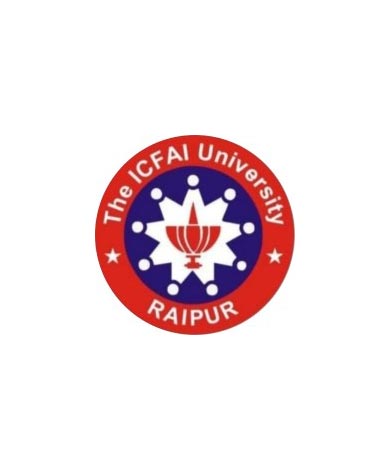Institutional Development Plan (IDP)
Vision and Mission
- To emerge as an institution of excellence known for research, academics and practice.
Mission
- To provide quality, accessible, and equitable education aligned with NEP 2020, integrating skills and multidisciplinary approaches.
- To create a research-driven ecosystem that generates knowledge and solves real-world challenges.
- To nurture ethical and socially responsible professionals ready for global challenges.

- Equitable Access and Inclusivity:
- Ensure quality education for students from diverse socio-economic backgrounds.
- Increase accessibility for Persons with Disabilities (PwD) and other marginalized groups.
- Nurture gender parity and promote diversity in all university functions.
- Academic Excellence:
- Enhance curricula with multidisciplinary programs, integrating traditional knowledge systems and modern technology.
- Establish Centres of Excellence in cutting-edge areas like Artificial Intelligence, Data Analytics, and Renewable Energy.
- Develop a robust system for faculty training to adopt innovative teaching and research practices.
- Research and Innovation:
- Build a world-class research ecosystem with state-of-the-art facilities.
- Encourage industry-academia partnerships to drive innovation and commercialization of intellectual property.
- Focus on solving regional, national, and global challenges through transdisciplinary research.
- Governance and Leadership:
- Develop a participative governance model that involves all stakeholders, including students, faculty, alumni, and industry experts.
- Enhance transparency, accountability, and strategic decision-making processes.
- Sustainability and Green Initiatives:
- Create a sustainable campus with green infrastructure, renewable energy use, and water conservation systems.
- Promote awareness of environmental issues among students and staff.
- Financial Sustainability:
- Develop diversified revenue streams through partnerships, endowments, grants, and entrepreneurial ventures.
- Establish a transparent and efficient financial management system.
A. Academic Infrastructure
- Short-term Goals:
- Develop smart classrooms equipped with digital teaching tools.
- Introduce interdisciplinary and flexible curricula with strong industry alignment.
- Set up departmental libraries with both physical and digital resources.
- Long-term Goals:
- Build fully equipped Centres of Excellence in fields like Artificial Intelligence, IoT, and Biotech.
- Design and implement dual-degree programs with international institutions.
- Establish dedicated labs for innovative and application-oriented learning.
B. Physical Infrastructure
- Develop a smart campus integrating digital solutions for energy efficiency, safety, and accessibility.
- Create dedicated vocational training and skill development hubs to enhance employability.
- Expand campus facilities to include:
- Student hostels with gender-sensitive designs.
- Recreational facilities, including gyms, sports complexes, and cultural activity centres.
- Health centres for physical and mental well-being.
C. Digital Infrastructure
- Implement high-speed internet connectivity across the campus with redundant systems for reliability.
- Develop a centralized Learning Management System (LMS) for seamless digital learning.
- Build a digital repository for open access to research papers, case studies, and other academic content.
- Enable integration with the Academic Bank of Credits (ABC) for credit transfers and flexible learning pathways.
D. Research and Innovation Ecosystem
- Establish a Research and Development (R&D) Cell to streamline research efforts.
- Create incubation centres to promote start-ups and entrepreneurship.
- Partner with industries for live research projects and internships.
- Encourage faculty and students to file patents and copyrights for innovative work.
- Develop mechanisms for monetization of intellectual property through licensing and technology transfer.
E. Supportive and Facilitative Framework
- Implement student support services, including career counselling, mentoring, and grievance redressal mechanisms.
- Develop inclusivity through infrastructure like PwD-friendly buildings and dedicated diversity and gender sensitization programs.
- Create alumni networks for mentorship and funding opportunities.
F. Networking and Collaboration
- Strengthen academia-industry linkages for curriculum design, internships, and employment.
- Establish collaborations with international universities for exchange programs, joint research, and dual-degree initiatives.
- Engage with local communities to address regional challenges and foster sustainable development.
|
Development Area |
Estimated Timeline |
|
Physical Infrastructure |
2-3 years |
|
Digital Infrastructure |
1-2 years |
|
Academic Infrastructure |
3-5 years |
|
Research and Innovation |
5-7 years |
|
Networking and Collaboration |
5-10 years |
|
Financial Stability |
3-5 years |
|
Green and Sustainable Campus |
Ongoing |
A. IDP Strategy Team
- Formed by faculty, administrators, students, and alumni to design and oversee the IDP.
- Responsibilities include:
- Conducting SWOC (Strengths, Weaknesses, Opportunities, and Challenges) analyses.
- Preparing annual action plans and monitoring progress.
- Coordinating with external stakeholders for funding and partnerships.
B. Governing Council
- Constituted with industry experts, policymakers, and academicians to provide strategic advice.
- Roles include:
- Aligning institutional goals with national and international trends.
- Ensuring compliance with UGC and NEP guidelines.
- Revenue Diversification:
- Expand undergraduate programs to increase tuition revenue.
- Attract grants from government bodies like UGC and DST.
- Seek philanthropic contributions from alumni and corporates under CSR initiatives.
- Generate income through research commercialization and consultancy projects.
- Cost Management:
- Implement cost-effective energy solutions.
- Optimize operational efficiency using data-driven decision-making.
- Key Performance Indicators (KPIs):
- Enrolment and retention rates.
- Research output: Number of patents, publications, and industry collaborations.
- Graduate employability statistics.
- Financial health indicators, such as revenue growth and cost-efficiency.
- Feedback Mechanisms:
- Regular surveys among students, faculty, and other stakeholders.
- Annual review of strategic goals and action plans.
- Establish multiple Centres of Excellence (CoEs) in priority areas like:
- Renewable Energy and Sustainability.
- Artificial Intelligence and Data Science.
- Agricultural and Rural Development.
- CoEs to focus on applied research, industry collaboration, and community impact.
- Measure success by tracking patents, publications, and community benefits.
- Develop an energy-efficient campus using solar panels and rainwater harvesting systems.
- Implement waste management programs, including recycling and composting.
- Introduce eco-friendly transportation options like bicycles and electric vehicles.
- Foster environmental awareness through student-led sustainability projects.
This IDP sets a detailed and actionable roadmap for ICFAI University Raipur to achieve excellence in academics, research, governance, and sustainability. It aligns with the UGC Guidelines and the broader vision of NEP 2020, ensuring the university contributes meaningfully to national and global development